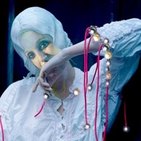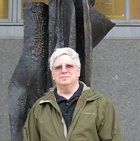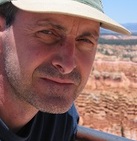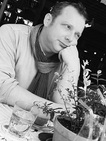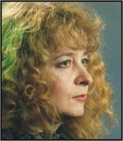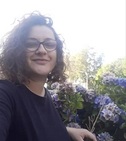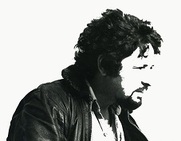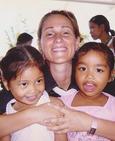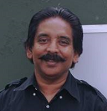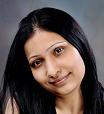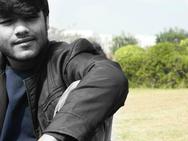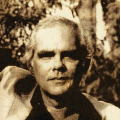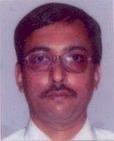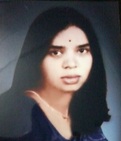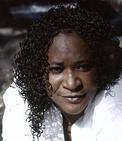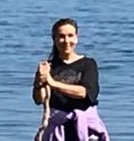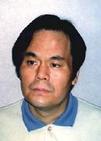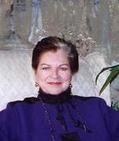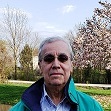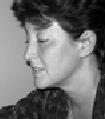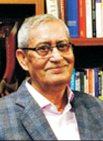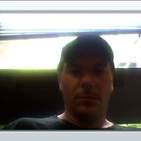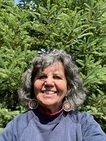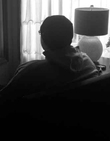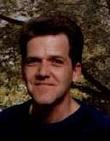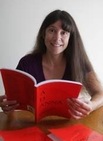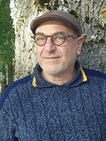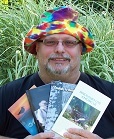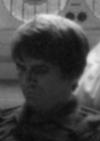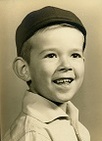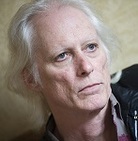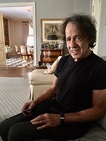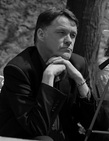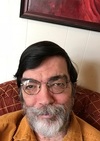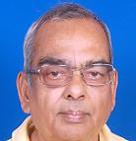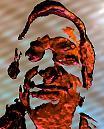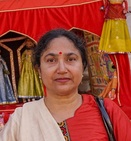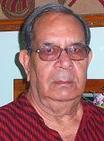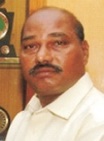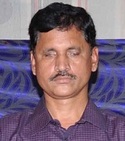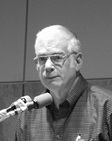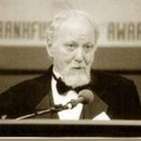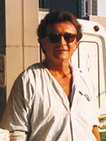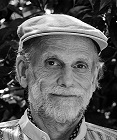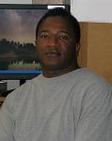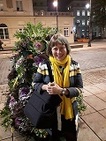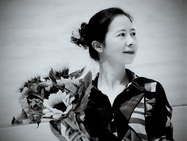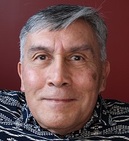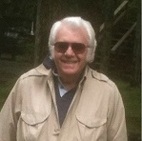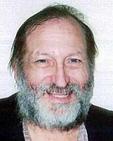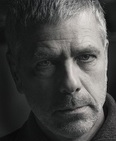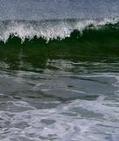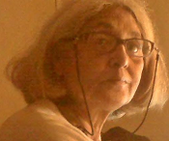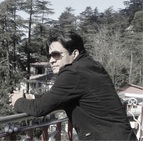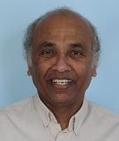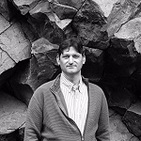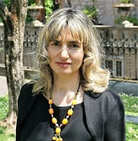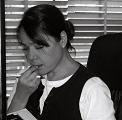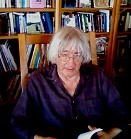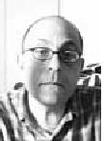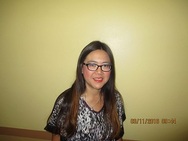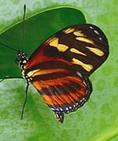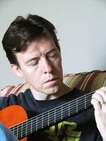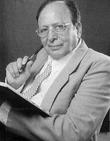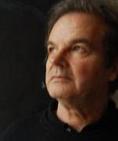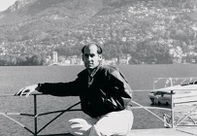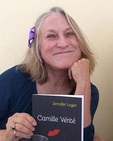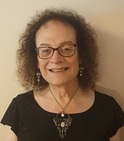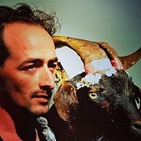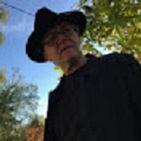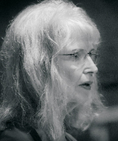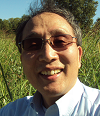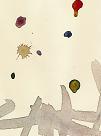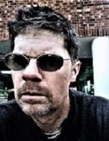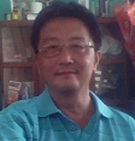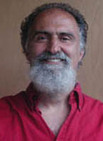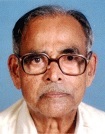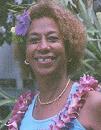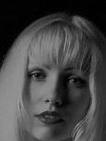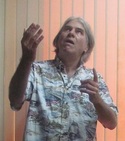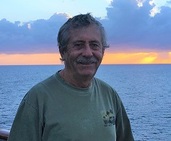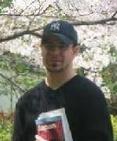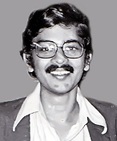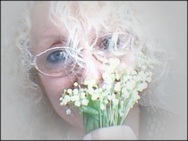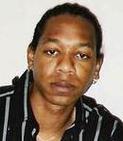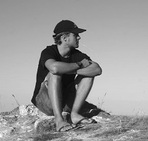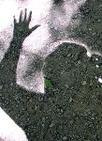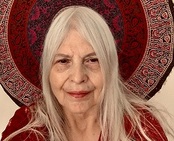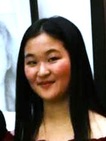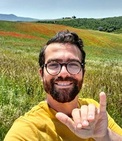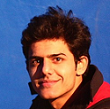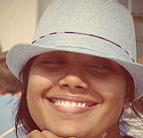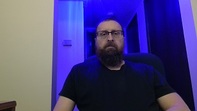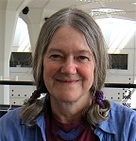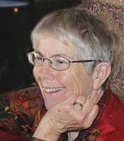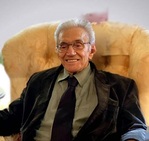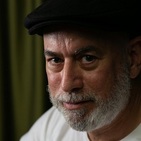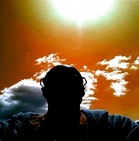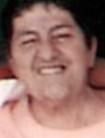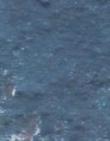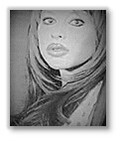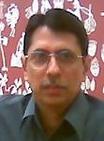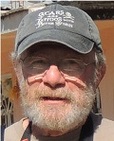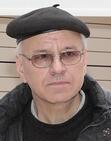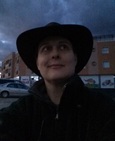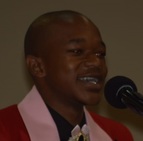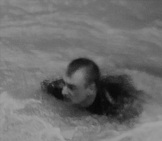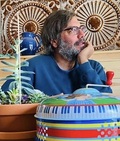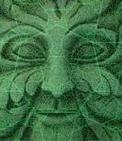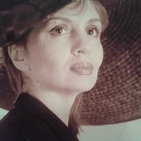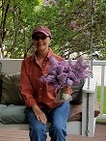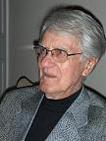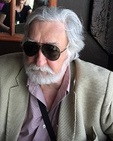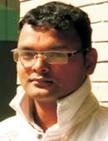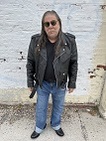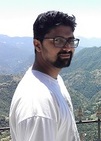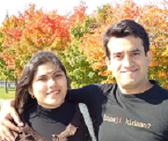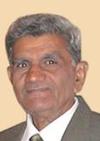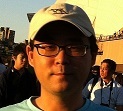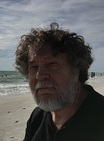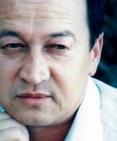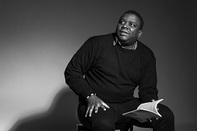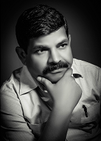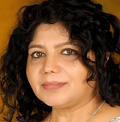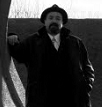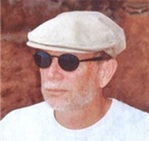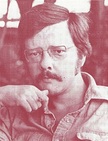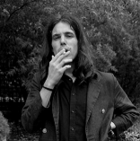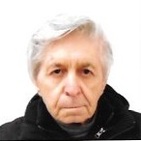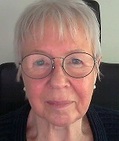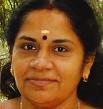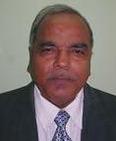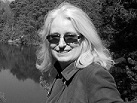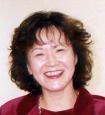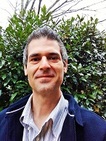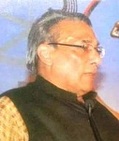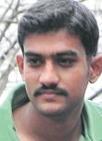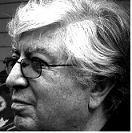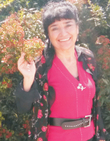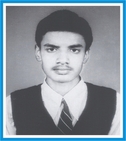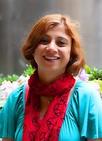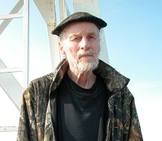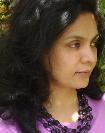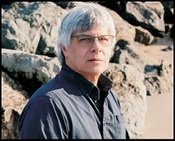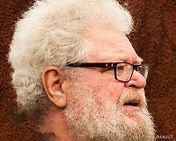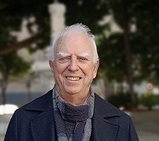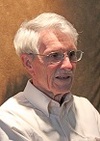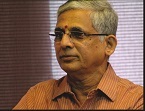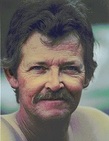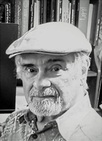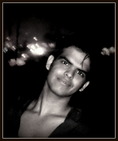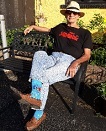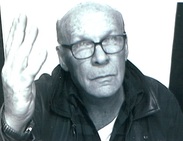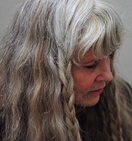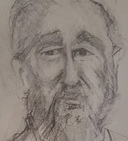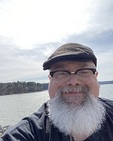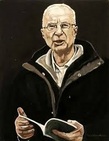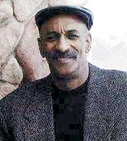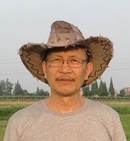Ban'ya Natsuishi and Kōji Yasui
| Ban'ya Natsuishi and Kōji Yasui |
By Sayumi Kamakura [Originally published in Kokubungaku, Gakutōsha, Dec. 2008 special edition] Haiku is borne of the study of works that have come before. This is a truism not limited to haiku alone. One sees it throughout all genres, whether music, painting, sculpture or theater. There are no creative works that do not owe something to their forebears. There may be artists somewhere who can claim that their work is influenced by no one and is completely original. But if we look more closely at that person's history and training, somewhere along the way they have undoubtedly come upon something that has produced a response in them, something that has made them think. Whether a conscious process or not, these opportunities constitute a kind of influence of sorts. First awakening to haiku in his mid-teens, Ban'ya Natsuishi studied the works of quite a variety of haikuists, including Sumio Mori, Ryuta Iida, Shūson Katoh, and Kusatao Nakamura, but he was not especially drawn to any of them. Then in his twenties he ran across a copy of Afugaku, a collection of haiku by Kōji Yasui, at a used book store and for the first time became completely absorbed in haiku. In his book The Poetics of Haiku Natsuishi confesses, "The strangest feeling came upon me, I simply cannot explain. It was unsettling." "I struggled to identify exactly what produces this unsettling feeling." Not only was it the first time he had been struck with such a feeling of mystery, it was the first haiku he had come across that defied any simple solutions to interpret and understand. Once he was exposed to the haiku of Kōji Yasui, Natsuishi threw himself into the ravenous reading of his work. In his critical writings Natsuishi lists the works of Yasui which he studied most closely. These were Seinenkyō (Youth Passage) (1963), Sekinaigaku (1971), Afugaku (1974), and Mitsumoshū (1979). Ban'ya Natsuishi was born in 1955, a difference of twenty years in age from Kōji Yasui, born in 1936. For a time during his youth Natsuishi remained completely infatuated with Yasui's haiku. He wanted to gain a deeper understanding of what Yasui's haiku were trying to say, and was delighted whenever he managed to crack the mystery of a particular piece. Other times the difficulty would only increase the more he read something, and this would torment him for days. What is it about Yasui's work that attracted Natsuishi? What aspect of Yasui's haiku was it that managed to draw the interest of Natsuishi? Falling flowers or falling snow Ban'ya Natsuishi, from Ryōjōki The column of ice irritated Kōji Yasui, from Seinenkyō Here we consider two pieces both of which take up the theme of irritation. Emotions such as aggravation, annoyance, and irritation seemed a constant companion for Natsuishi as a young man, and it was something he must have been quite conscious of . In the haiku shown here, Natsuishi makes use of the character 'ira' (棘) to write the Japanese word for irritation (iraira). However, this character is normally read as 'toge' meaning 'thorn.' By using this character Natsuishi accentuates the sense of irritation or annoyance brought on by the column's presence. The poet sees white objects falling and swirling in the wind behind the column and wonders what they are - flowers or snow. He could easily extend his hand and catch one on his palm to find out. There's nothing he can do about the column. But instead he frets about the question, complaining about the column, "an irritant," which has thrust itself into his line of vision. There's a kind of cantankerous, restless sensibility in this piece which we do not usually associate with haiku. In Yasui's piece we might interpret "the column of ice" as being a representation of the "I" or the speaker of the poem, in which case the source of the irritation is the mere fact that "you can see right through/to my insides." This is something which the speaker would prefer not to be seen. It is something that would be best hidden. And yet the great column of ice has become known - it cannot be hidden. The idea as such may be surprising, but now we notice that this "irritation" contains a subtle sense of shame. Rather than the sense of the erotic contained in the column image, this sense of shame or embarrassment is one that elicits a knowing smile. The poem seems to express an especially intense feeling of irritation, as well as a certain boyishness. The writer holds nothing back. Yasui's collection Seinenkyō was published when he was twenty-seven years old. Natsuishi's Ryōjōki (A Record of My Hunting Days) was also published when the author was twenty-seven years old. Though both writers matured quickly as haikuists, there is no mistake that these are the works of someone in their twenties. Gazing up at falling snow Ban'ya Natsuishi, from Ryōjōki Sounding on the beach Kōji Yasui, from Seinenkyō Each of these poems were placed at the beginning of its author's book. Most haiku collections are organized either in the order in which the pieces were written or according to the season. Neither Natsuishi nor Yasui have conformed to this convention. In the afterward to his collected works, Kōji Yasui writes, "Even after its publication I continued think about reselecting and reordering the pieces in Seinenkyō." Similarly, in Natsuishi's collected works, Ekkyō Kikō (Border Crossings), the writer states that "Gazing up at falling snow" was not the first piece he had written for the book. No doubt both writers thought deeply about which piece to open their books with, since the overall flow and structure of the book would be determined by this choice. In Natsuishi's gazing up at the falling snow we see a certain yearning for the transcendent, while in Yasui's piece, despite the distancing effect of referring to the living mollusks as organic matter, imagining the sounding of the trumpet shells reveals a romantic side. Again, I see a youthfulness in the quality of both these pieces. A certain naïveté, and yet a purity as well. Though both writers in their later work would be considered difficult or even obscure by readers, I always see a certain yearning or romantic quality in the choices of these two haikuists for the opening pieces of their books. Afternoon of the opening wound Ban'ya Natsuishi, from Ryōjōki The old shack in the afternoon Kōji Yasui, from Afugaku Kōji Yasui's "Afternoon hut" poem is especially well known. Most likely Natsuishi stopped to consider this piece many times over, and this is very likely why he eventually would write a haiku of his own opening with the word 'afternoon.' In response to the consummate emptiness of Yasui's poem, Natsuishi was attempting to express emotional pain as symbolized in the redness of the opening wound and the wildfires. It's always around this time Ban'ya Natsuishi, from Ryōjōki Tossed the dead rat Kōji Yasui, from Afugaku Ban'ya has written about the image of the dead rat in this poem: "A rat hangs suspended like a black stain in the midday air. It is high noon, and here time also is suspended." [The Poetics of Haiku] Ban'ya saw in this piece an eerie space shot through with both time and death. Ban'ya's piece "It's around this time" also presents a time-space condition presenting a certain strangeness. Echoing Kōji's dead rat haiku, there is "the one in the emptiness." We never really know who "the one" is (possibly a projection of the author) repeatedly left behind. In one haiku a dead rat which goes on living by virtue of being tossed into "eternal daylight," and in the other "one in the emptiness" who continues his existence by being left behind - these two strange pieces whose concepts intertwine, and at the same time struggle in mutual attraction and resistance. I am stopped short at Kōji's haiku, and in wrestling with its difficulties, its nuances, find myself thinking of Ban'ya groping to create a world all his own. Ban'ya was indeed captivated by Kōji's haiku, and yet while his fascination continued he struggled to escape this intense influence. One can see the same pattern in the earlier years of Kōji's haiku as well. One can discern the influence the work of haikuists such as Kōi Nagata, Ikuya Katoh, and Jūshin Takayanagi had on Kōji from his critical writings of the time, as well as the conflicted feelings he also had about these writers and his intellectual wandering in search of the direction his own haiku should take. Later, Ban'ya also would develop an intimacy with the work of Kōi Nagata, Ikuya Katoh, and Jūshin Takayanagi. Natsuishi Ban'ya's roost Natsuishi Ban'ya, from Metropolitique Natsuishi's collection Metropolitique appeared in 1985. By this time Jūshin, an important influence on both Ban'ya and Kōji, was dead, and the magazine that had regularly published Ban'ya's work, Haiku Hyōron, had folded. The time had also come when Ban'ya would grow distant from Kōji. As if it were not surprising enough to find the author's own name appearing in the first line of the poem, Ban'ya chose to place it at the very beginning of the collection. And this is not the only line in the book that includes his name. Reading this book for the first time I thought the author must be incredibly self-conscious. However, considering the number of years he struggled with Kōji's haiku, one can understand how the expression of those lines was necessary in order to become completely himself as a writer. Kōji had also experienced the same struggle as a young haikuist, and in order to distance himself from his former influences he left Tokyo and returned to his hometown in Akita Prefecture in the far north of Japan. Heaven is a solid Ban'ya, from Shinkūritsu (Vacuum Regulation) The giant of fog Ban'ya, from Kami-gami no Fūga (Fugue of the Gods) Left behind Ban'ya, from Kyoseki Kyobokugaku I call to the nothing Ban'ya, from Chikyū Junrei (Earth Pilgrimage) What is it that frightens Kōji, from Hanjin Thou shalt enter by the gate Kōji, from Nanji to Ware (I and Thou) The grass saves up its voice Kōji, from Shidai ni Arazu In the western sky Kōji, from Kuhen Out of all the many works the two writers have produced, those having something in common are collected here. Ban'ya has travelled widely, visiting countries as various as Bali, Tunisia, China, Turkey, France, and Italy, and has attempted to bring the spirit of these different places into his haiku. In contrast, Kōji's haiku delves into the history of the mountains, trees, and shrubbery, the wind and clouds and geological formations of his own native place which are so essential to his identity. What the two writers have in common is the cultivation of a tremendous imagination in seeing just how far they can go, and at the same time just how deeply they can delve into the internal in their haiku composition. English translations by Eric Selland
|
Authors
Keep in touch
Ban'ya Natsuishi and Kōji Yasui
| Ban'ya Natsuishi and Kōji Yasui |
By Sayumi Kamakura [Originally published in Kokubungaku, Gakutōsha, Dec. 2008 special edition] Haiku is borne of the study of works that have come before. This is a truism not limited to haiku alone. One sees it throughout all genres, whether music, painting, sculpture or theater. There are no creative works that do not owe something to their forebears. There may be artists somewhere who can claim that their work is influenced by no one and is completely original. But if we look more closely at that person's history and training, somewhere along the way they have undoubtedly come upon something that has produced a response in them, something that has made them think. Whether a conscious process or not, these opportunities constitute a kind of influence of sorts. First awakening to haiku in his mid-teens, Ban'ya Natsuishi studied the works of quite a variety of haikuists, including Sumio Mori, Ryuta Iida, Shūson Katoh, and Kusatao Nakamura, but he was not especially drawn to any of them. Then in his twenties he ran across a copy of Afugaku, a collection of haiku by Kōji Yasui, at a used book store and for the first time became completely absorbed in haiku. In his book The Poetics of Haiku Natsuishi confesses, "The strangest feeling came upon me, I simply cannot explain. It was unsettling." "I struggled to identify exactly what produces this unsettling feeling." Not only was it the first time he had been struck with such a feeling of mystery, it was the first haiku he had come across that defied any simple solutions to interpret and understand. Once he was exposed to the haiku of Kōji Yasui, Natsuishi threw himself into the ravenous reading of his work. In his critical writings Natsuishi lists the works of Yasui which he studied most closely. These were Seinenkyō (Youth Passage) (1963), Sekinaigaku (1971), Afugaku (1974), and Mitsumoshū (1979). Ban'ya Natsuishi was born in 1955, a difference of twenty years in age from Kōji Yasui, born in 1936. For a time during his youth Natsuishi remained completely infatuated with Yasui's haiku. He wanted to gain a deeper understanding of what Yasui's haiku were trying to say, and was delighted whenever he managed to crack the mystery of a particular piece. Other times the difficulty would only increase the more he read something, and this would torment him for days. What is it about Yasui's work that attracted Natsuishi? What aspect of Yasui's haiku was it that managed to draw the interest of Natsuishi? Falling flowers or falling snow Ban'ya Natsuishi, from Ryōjōki The column of ice irritated Kōji Yasui, from Seinenkyō Here we consider two pieces both of which take up the theme of irritation. Emotions such as aggravation, annoyance, and irritation seemed a constant companion for Natsuishi as a young man, and it was something he must have been quite conscious of . In the haiku shown here, Natsuishi makes use of the character 'ira' (棘) to write the Japanese word for irritation (iraira). However, this character is normally read as 'toge' meaning 'thorn.' By using this character Natsuishi accentuates the sense of irritation or annoyance brought on by the column's presence. The poet sees white objects falling and swirling in the wind behind the column and wonders what they are - flowers or snow. He could easily extend his hand and catch one on his palm to find out. There's nothing he can do about the column. But instead he frets about the question, complaining about the column, "an irritant," which has thrust itself into his line of vision. There's a kind of cantankerous, restless sensibility in this piece which we do not usually associate with haiku. In Yasui's piece we might interpret "the column of ice" as being a representation of the "I" or the speaker of the poem, in which case the source of the irritation is the mere fact that "you can see right through/to my insides." This is something which the speaker would prefer not to be seen. It is something that would be best hidden. And yet the great column of ice has become known - it cannot be hidden. The idea as such may be surprising, but now we notice that this "irritation" contains a subtle sense of shame. Rather than the sense of the erotic contained in the column image, this sense of shame or embarrassment is one that elicits a knowing smile. The poem seems to express an especially intense feeling of irritation, as well as a certain boyishness. The writer holds nothing back. Yasui's collection Seinenkyō was published when he was twenty-seven years old. Natsuishi's Ryōjōki (A Record of My Hunting Days) was also published when the author was twenty-seven years old. Though both writers matured quickly as haikuists, there is no mistake that these are the works of someone in their twenties. Gazing up at falling snow Ban'ya Natsuishi, from Ryōjōki Sounding on the beach Kōji Yasui, from Seinenkyō Each of these poems were placed at the beginning of its author's book. Most haiku collections are organized either in the order in which the pieces were written or according to the season. Neither Natsuishi nor Yasui have conformed to this convention. In the afterward to his collected works, Kōji Yasui writes, "Even after its publication I continued think about reselecting and reordering the pieces in Seinenkyō." Similarly, in Natsuishi's collected works, Ekkyō Kikō (Border Crossings), the writer states that "Gazing up at falling snow" was not the first piece he had written for the book. No doubt both writers thought deeply about which piece to open their books with, since the overall flow and structure of the book would be determined by this choice. In Natsuishi's gazing up at the falling snow we see a certain yearning for the transcendent, while in Yasui's piece, despite the distancing effect of referring to the living mollusks as organic matter, imagining the sounding of the trumpet shells reveals a romantic side. Again, I see a youthfulness in the quality of both these pieces. A certain naïveté, and yet a purity as well. Though both writers in their later work would be considered difficult or even obscure by readers, I always see a certain yearning or romantic quality in the choices of these two haikuists for the opening pieces of their books. Afternoon of the opening wound Ban'ya Natsuishi, from Ryōjōki The old shack in the afternoon Kōji Yasui, from Afugaku Kōji Yasui's "Afternoon hut" poem is especially well known. Most likely Natsuishi stopped to consider this piece many times over, and this is very likely why he eventually would write a haiku of his own opening with the word 'afternoon.' In response to the consummate emptiness of Yasui's poem, Natsuishi was attempting to express emotional pain as symbolized in the redness of the opening wound and the wildfires. It's always around this time Ban'ya Natsuishi, from Ryōjōki Tossed the dead rat Kōji Yasui, from Afugaku Ban'ya has written about the image of the dead rat in this poem: "A rat hangs suspended like a black stain in the midday air. It is high noon, and here time also is suspended." [The Poetics of Haiku] Ban'ya saw in this piece an eerie space shot through with both time and death. Ban'ya's piece "It's around this time" also presents a time-space condition presenting a certain strangeness. Echoing Kōji's dead rat haiku, there is "the one in the emptiness." We never really know who "the one" is (possibly a projection of the author) repeatedly left behind. In one haiku a dead rat which goes on living by virtue of being tossed into "eternal daylight," and in the other "one in the emptiness" who continues his existence by being left behind - these two strange pieces whose concepts intertwine, and at the same time struggle in mutual attraction and resistance. I am stopped short at Kōji's haiku, and in wrestling with its difficulties, its nuances, find myself thinking of Ban'ya groping to create a world all his own. Ban'ya was indeed captivated by Kōji's haiku, and yet while his fascination continued he struggled to escape this intense influence. One can see the same pattern in the earlier years of Kōji's haiku as well. One can discern the influence the work of haikuists such as Kōi Nagata, Ikuya Katoh, and Jūshin Takayanagi had on Kōji from his critical writings of the time, as well as the conflicted feelings he also had about these writers and his intellectual wandering in search of the direction his own haiku should take. Later, Ban'ya also would develop an intimacy with the work of Kōi Nagata, Ikuya Katoh, and Jūshin Takayanagi. Natsuishi Ban'ya's roost Natsuishi Ban'ya, from Metropolitique Natsuishi's collection Metropolitique appeared in 1985. By this time Jūshin, an important influence on both Ban'ya and Kōji, was dead, and the magazine that had regularly published Ban'ya's work, Haiku Hyōron, had folded. The time had also come when Ban'ya would grow distant from Kōji. As if it were not surprising enough to find the author's own name appearing in the first line of the poem, Ban'ya chose to place it at the very beginning of the collection. And this is not the only line in the book that includes his name. Reading this book for the first time I thought the author must be incredibly self-conscious. However, considering the number of years he struggled with Kōji's haiku, one can understand how the expression of those lines was necessary in order to become completely himself as a writer. Kōji had also experienced the same struggle as a young haikuist, and in order to distance himself from his former influences he left Tokyo and returned to his hometown in Akita Prefecture in the far north of Japan. Heaven is a solid Ban'ya, from Shinkūritsu (Vacuum Regulation) The giant of fog Ban'ya, from Kami-gami no Fūga (Fugue of the Gods) Left behind Ban'ya, from Kyoseki Kyobokugaku I call to the nothing Ban'ya, from Chikyū Junrei (Earth Pilgrimage) What is it that frightens Kōji, from Hanjin Thou shalt enter by the gate Kōji, from Nanji to Ware (I and Thou) The grass saves up its voice Kōji, from Shidai ni Arazu In the western sky Kōji, from Kuhen Out of all the many works the two writers have produced, those having something in common are collected here. Ban'ya has travelled widely, visiting countries as various as Bali, Tunisia, China, Turkey, France, and Italy, and has attempted to bring the spirit of these different places into his haiku. In contrast, Kōji's haiku delves into the history of the mountains, trees, and shrubbery, the wind and clouds and geological formations of his own native place which are so essential to his identity. What the two writers have in common is the cultivation of a tremendous imagination in seeing just how far they can go, and at the same time just how deeply they can delve into the internal in their haiku composition. English translations by Eric Selland
|

 Items in cart - View Cart
Items in cart - View Cart 